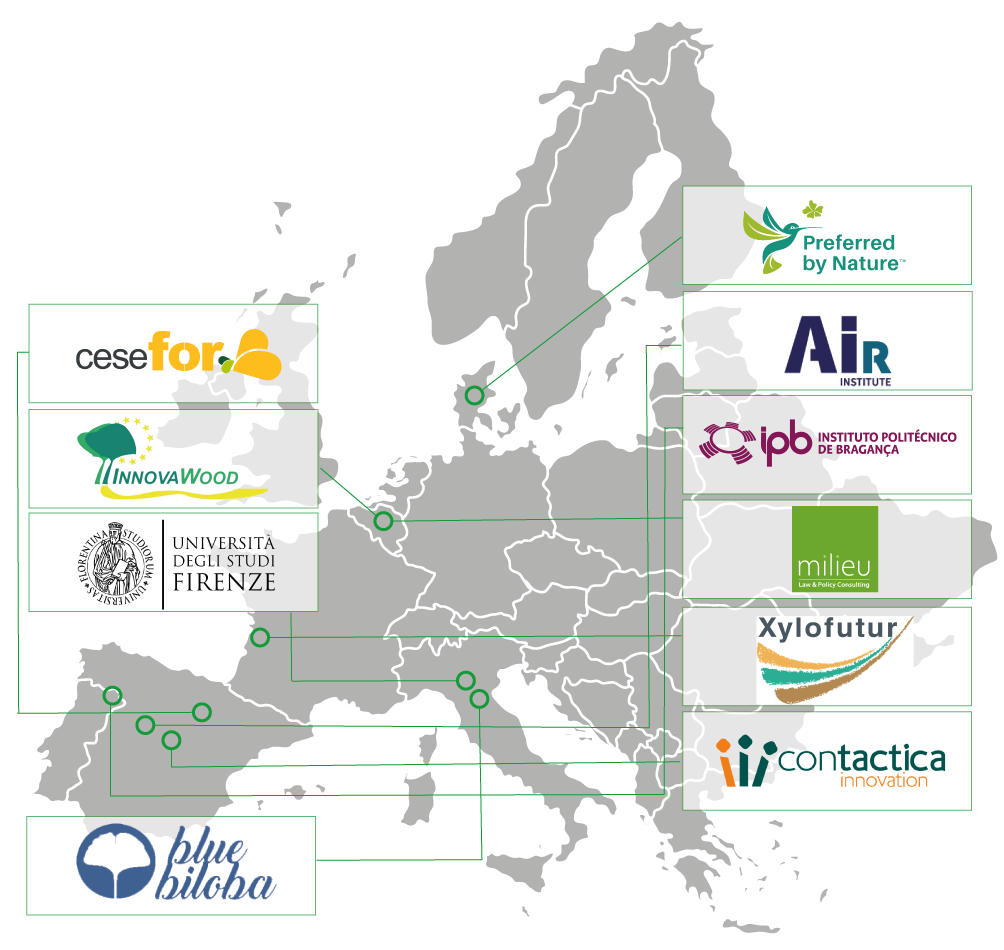The SMURF project, in line with EU’s Forest Strategy
About the project
The socioeconomical changes in forest ownership in Europe, joint with the threats of climate change and other changes, like the urbanization process, agriculture intensification and others, result in land abandonment, landscape homogenization, forest holdings fragmentation, forest decay, increase of fire risk, loss of forest habitat and reduction of many ecosystem services, including carbon sequestration, timber production, recreation, and biodiversity conservation.
Nobody knows the number of forest owners and forest holdings in Europe (Indicator 6.1 of SoEF-2020), that might be more than 20 million people and in many countries there are strong structural barriers to forest management and forest investment, like the lack of an updated cadastre or clear property titles.
In the last 60 years agricultural holdings in Europe have gone through a deep transformation, with clear improvements in structures, new business models and others, clearly oriented by the Common Agricultural Policy. European forest holdings are still lacking such a transformation, and there are strong differences among public holdings and private ones. The situation of Small Forest Holdings (SFHs) is particularly unknown, given the lack of registers of forest holdings in many European regions.
The problem of farm fragmentation has been clearly addressed for decades, to overcome barriers to agriculture modernization, but the serious problem of forest fragmentation and unclear ownership has not been addressed in many countries, and it is a clear barrier to Sustainable Forest Management.
European Forest Strategy
Forestry in Europe is tending towards multifunctionality, integrating a diversity of societal demands, like biodiversity conservation, climate change mitigation and adaptation or the production of clean water and cultural services like recreation or human health.
The evolving and dynamic concept of Sustainable Forest Management might make it possible, integrating a variety of silvicultural systems.
The SMURF project defends the right of the forest owner to decide on the goals and the management systems to be applied in his or her forest and the recent Bonn Ministerial Declaration, by Forest Europe, signed on 02/10/2024.
Official Web site
Solutions
The SMURF project supports the EU Forest Strategy 2030 by securing and promoting small-scale forest management for the sustainable use of wood and non-wood products. It will fully respect the cascading use principle and contribute to biodiversity and climate objectives, including forest ecosystem restoration and protection.
New tailored
Customized organizational and commercial models, based on Closer to Nature (CNS) forestry practices, that promote new ecosystem services (carbon farming and biodiversity) and the valorization of wood and non-wood forest products.
Formation
Training, digital tools and other support structures/instruments.
Support Guidelines
Guidelines to support policy-makers establishing regional, national and European standardized policies and retribution systems by creating a harmonized European Payment for Ecosystem Services (PES) system.

With a translational, multidisciplinary and multi-actor approach, thanks to its complementary and polyvalent consortium members composed of private, academia and public stakeholders, and taking into account sociocultural and geodemographic factors sometimes neglected, SMURF will provide sustainability solutions for the entire forest-based value chain.


